Words Nell Card Photographs Lisa Valder
Spent coffee grounds, dried pomegranate skins, alder cones and elderberries are just some of the ingredients Ros Humphries uses in her craft – natural dyeing. At this time of year, it’s ‘hips and haws’ plucked from the bushes alongside the Creek, and the still-green, frothy fronds of autumn fennel pulled from the ground. We recently joined Ros on an early-morning forage to find out more about the process of natural dyeing and the way in which her immediate surrounding influence and inspire her craft.
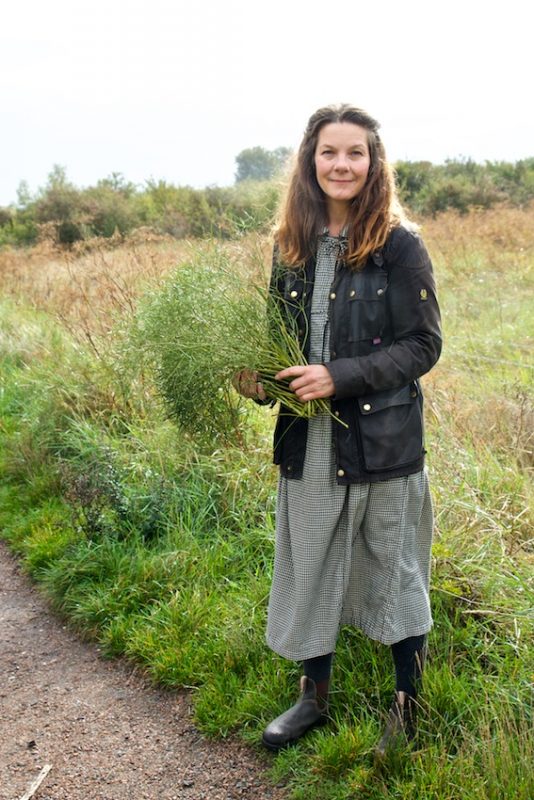
Ros Humphries foraging for wild fennel along the Creek
Firstly, Ros is quick to point out that she abides by an unwritten foraging rule: ‘I take nothing below the knee or above the shoulder.’ The higher, berry-laden branches are for birds; the lower branches may have already been used by dogs. ‘I’m very conscious about what I’m picking,’ says Ros. ‘Natural dyeing is about celebrating nature, not trampling on it.’
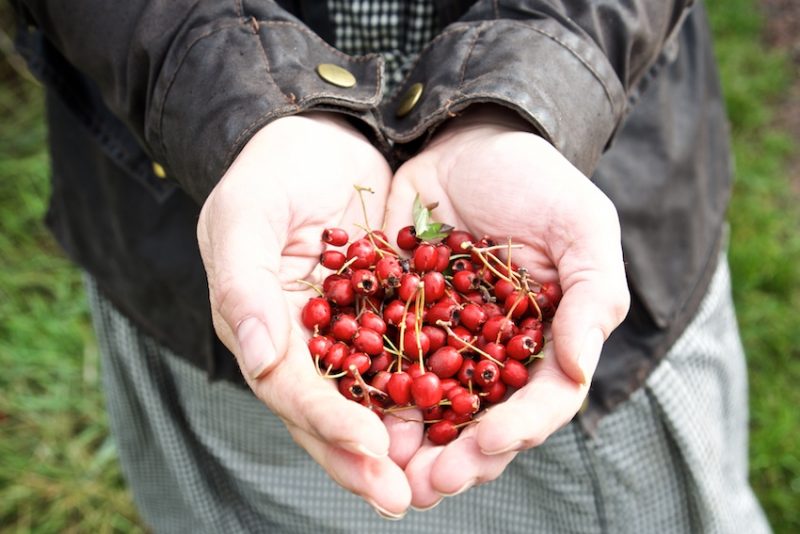
A handful of hawthorns, which will be used to create a natural dye bath
Ros founded The Natural Dyeworks two years ago, although she has been experimenting with natural dyes for five years. Her fascination with the potential for colour in nature began in London whilst on maternity leave. ‘I spent a lot of time at the Olympic Park in Stratford. I was so inspired by the landscaping there. With a baby in the city, I found myself leaning more and more towards nature.’ That leaning gradually culminated in a move to Faversham and a change in career.
Today, Ros scours the local landscape for raw ingredients. Her hunting ground changes with the seasons. In the summer, she can be found in St Mary’s churchyard, where there is an abundance of elderberries which produce gentle blues and dusky mauves. In the autumn, she explores the footpaths of Blean gathering bracken for warm apricot, taupe and beige. In a few weeks, readers may spot her walking her Border Terrier, Polly, through Oare Gunpowder Works, filling her pockets with fallen alder cones, which she will transform into a range of dull golds, creams and browns.
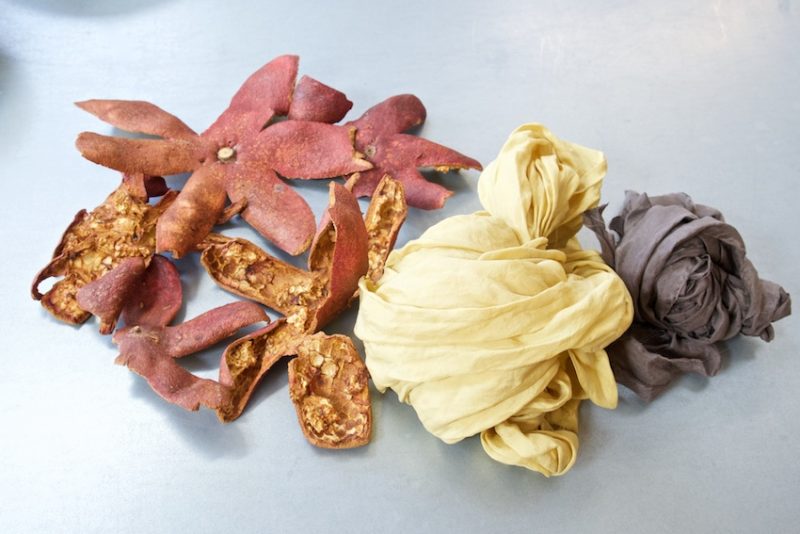
Dried pomegranate skins are used to create varying shades of yellow
Ros has also intercepted the waste streams of local food businesses. The Yard cafe saves its spent coffee grounds and avocado stones and skins for Ros’s dye bath, yielding pinks, peaches and mauves. Wasted Kitchen hands over its brown and red onion skins, which produce mustard, olive and dusky pinks. Similarly, a local food processing factory keeps its pomegranate skins for her. These are dried out in Ros’s garden shed and used to create vibrant yellows, greys and chartreuse greens. A cohort of local friends can also be relied upon to provide walnut husks and fallen acorns.
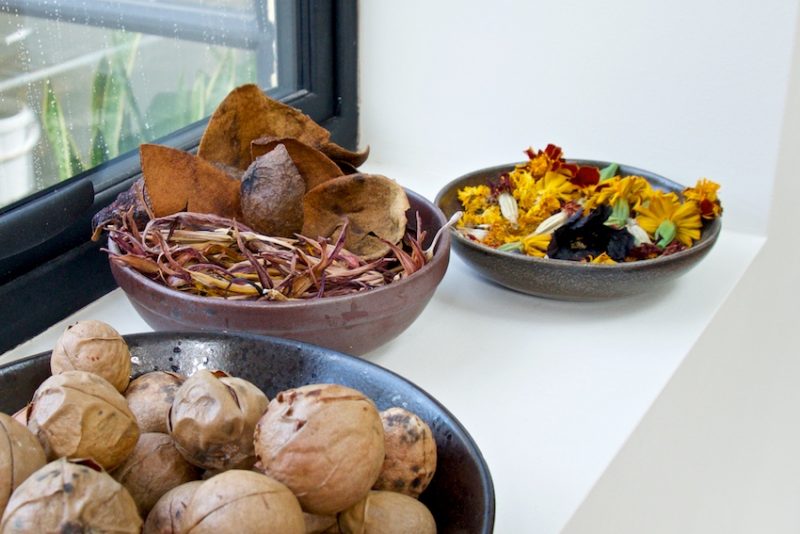
Avocado skins and stones are dried in bowls in Ros’s kitchen
Prior to launching The Natural Dyeworks, Ros was a textile buyer for Habitat. Her knowledge of colour, fabrics and dyeing techniques is far-reaching. ‘Natural dyeing doesn’t produce consistent results,’ she explains. ‘It wasn’t something I was ever able to explore through my work at Habitat, but once I tried it at home, I found it highly addictive. It forces you to look at the nature you’re in.’
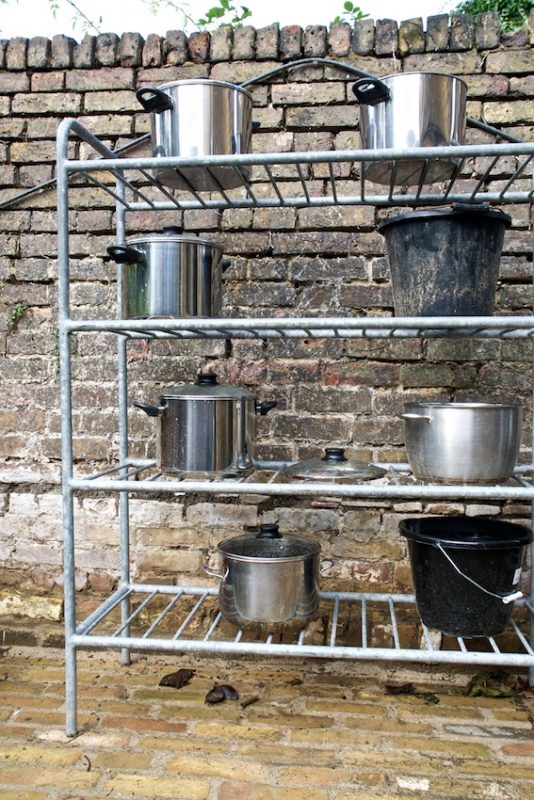
Natural ingredients steep in dye pots on Ros’s patio
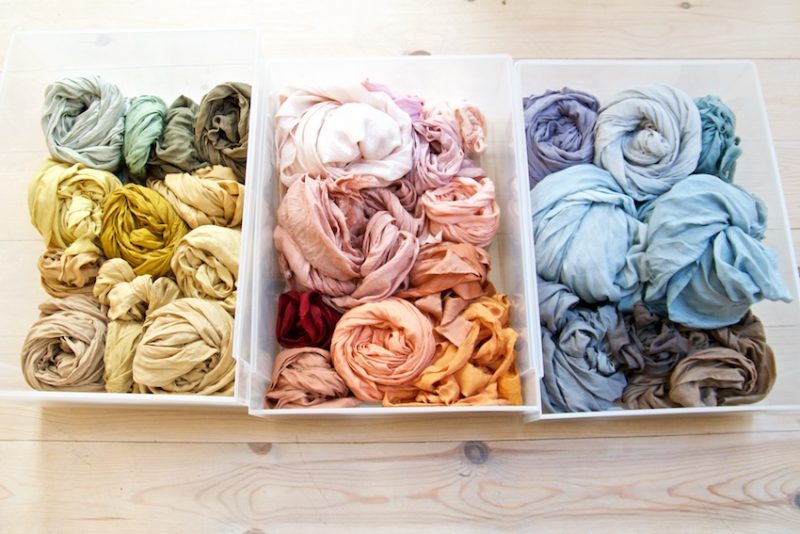
Ros’s natural palette, which changes with the seasons
Having gathered her raw ingredients, the process Ros follows is both slow and mercurial. ‘Even after five years, I am always surprised by the colours I create, because there are so many variables in the process.’ The type of water you use, the temperature you set and the length of time you steep your raw ingredients and your material can all have an effect on the final colour. For example, the wild fennel Ros used in the spring produces bright, acid yellows whereas the colour she elicits from today’s bunch will be ‘much more dingy’ by comparison as the chlorophyll in the plant is less vigorous at this time of year.

Onion skins can also be used to create a natural dye
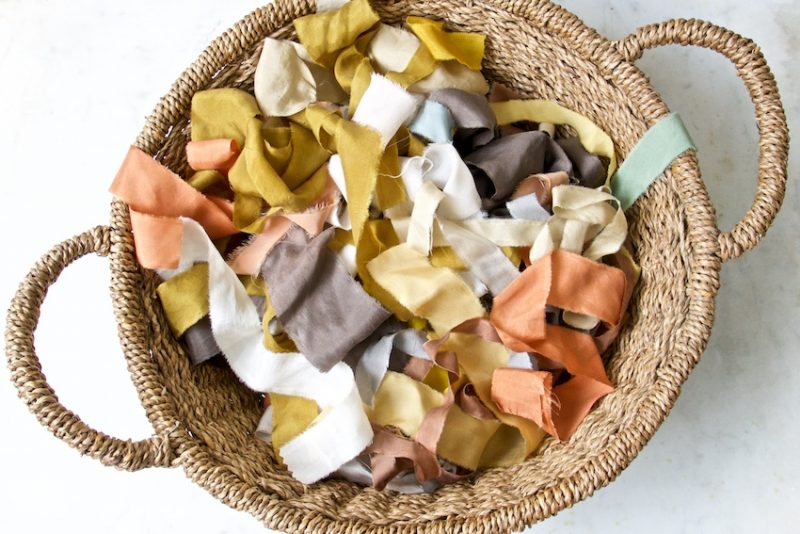
A basket of ‘snips’ from Ros’s silk ribbons
Ros’s natural dyes are applied to organic silk, bamboo, wool, cotton and linen. She supplies sustainable florists with naturally dyed silk ribbons (‘because nature goes with nature’ she says, simply) and works with discerning set designers and stylists, who are drawn to the unique, seasonal palettes she curates. (She recently supplied ribbons for Ridley Scott’s upcoming historic drama, The Last Duel.) Ros also sells a range of homeware including napkins, string bags, eye masks and – particularly at this time of year – naturally-dyed, organic wool socks, which are currently at the top of Faversham Life’s Christmas list.
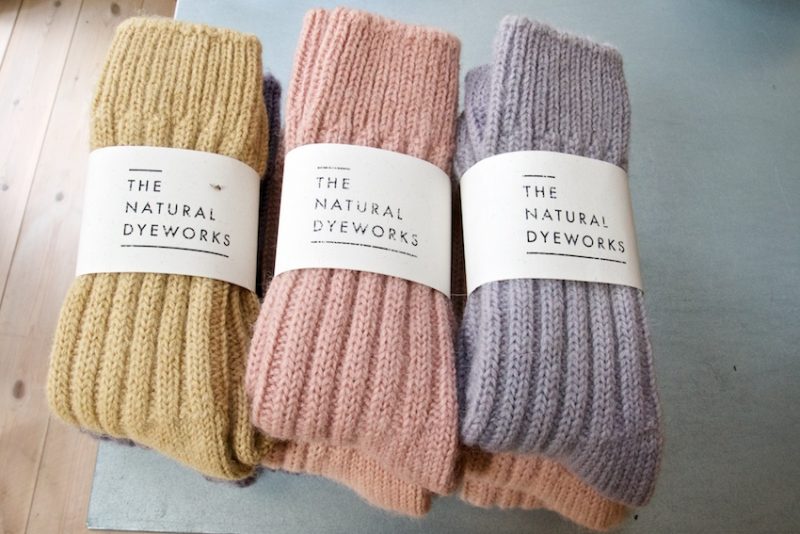
Dyed, dried and beautifully (sustainably) packaged socks
Keen to pass her knowledge and passion on, Ros also hosts occasional (and nowadays, socially-distanced) natural dyeing workshops. ‘I’m not an alchemist,’ she admits. ‘I don’t understand the science of natural dyeing – I just find the process so fascinating.’
Ros will be hosting a workshop at Grain and Hearth in Whitstable at the start of next year. Her new web shop will go live at the start of November; go to thenaturaldyeworks.com for orders and more information. You can follow Ros on Instagram @thenaturaldyeworks
Text: Nell Card. Photographs: Lisa Valder